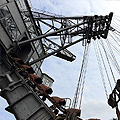MINING EQUIPMENT SHOULD BE COMPLIANT WITH EXTRACTIVE INDUSTRY ENVIRONMENT RULES
July 28, 2016
The extractive industry is tasked with many duties. Down at the mine face, new and improved mining equipment is called into service as mineral seams sink deeper below the earth. We’re left with little choice but to follow these geological commodities downward, which results in inhospitable operating conditions. It’s tough work. Meanwhile, executive level decisions protect the local environment by ensuring the expanded equipment line doesn’t incur an ecological mishap. Again, it’s tough work, a two-edged sword that pairs engineering challenges with environmental culpability, but we succeed by sending the very best equipment into the mine.
MAINTENANCE-FREE ADVANTAGES
Basic mathematics may not be everyone’s strong point, but even the most arithmetically challenged among us can appreciate this initial finding. Less maintenance equals less waste. Yes, maintenance is an unavoidable part of any setting where big machinery operates, but the use of a machine that lessens this practice has to be seen as a major step towards a cleaner environment. The equipment is sealed by thick-lipped housing panels. Oil lubricant baths and grease-filled cavities keep powerful drive shafts moving, but few if any pollutants ever escape the housings. It’s a doubly effective approach, as the bearings are also protected from external pollutants, the coal dust and coarse airborne matter that would otherwise damage lubricated parts.
ACCEPTING ENVIRONMENTAL STEWARDSHIP
Old working models for the extractive industry were haphazard affairs, but equipment emphasis has completely overhauled this antiquated methodology. We’re referring to the kilometers of conveyors and conveyor-incorporated stages that now rule the industry. The reduced carbon footprint uses a linear processing model to efficiently transport ore and minerals to their final destination. Additionally, the equipment conducts all pre-processing work while simultaneously moving the earthen commodities along the toughened belts. Dewatering work and screening stages take place here, as does all vibratory sorting. This is a major improvement over the sprawling chaos that had trucks trampling arable land and turning everything into a muddy mess. That old operating method gouged holes in the land, whereas incision-like conveyor lines are fast to dismantle. The land, in the latter case, quickly regenerates.
The mining equipment being discussed here is still evolving. Low-power parts reduce electrical energy consumption. Super-tough polymers are even now replacing hardened alloys that use precious energy to refine their form. Meanwhile, the extractive industry engages itself in continual reassessment scenarios, plans that not only comply with current environmental rulings but exceed them by creating new machine profiles that solve energy problems instead of generating new ones.
Screening Technology Pty Ltd T/AS Hawk Machinery
Address: 7 Lantana St Blackburn North Vic 3130
Contact Person: Bohdan Blaszczyk
Phone: +61 3 9877 7777
Fax: +61 3 9877 8177
Mobile: 0411 099 989
Email: info@hawkmachinery.com.au
Optimized by NetwizardSEO.com.au
Optimized by: Netwizard SEO


